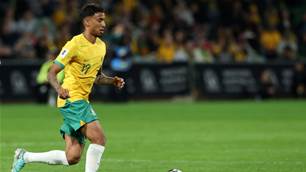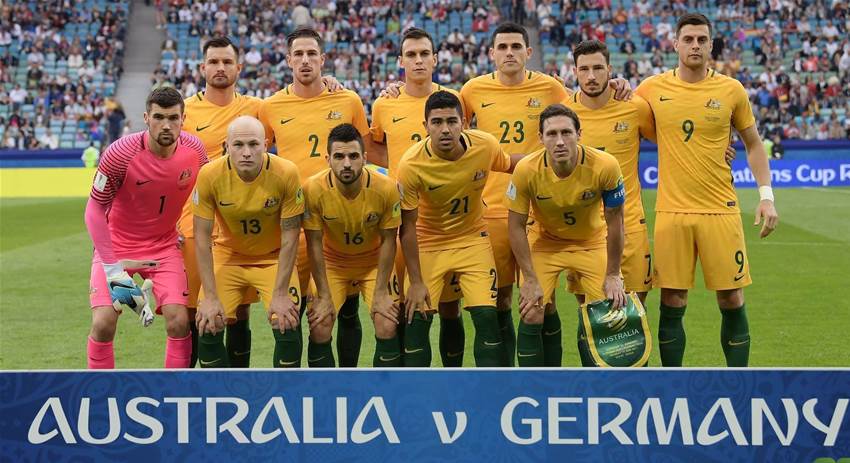The Socceroos paid the price for a costly first-half performance, with Germany winning 3-2 and starting their Confederations Cup campaign with a win.
Germany’s shape in possession

The transition between defence and attack saw Germany morph into a completely different shape, which caused havoc for the Australian defenders. The system was clearly geared toward occupying Australia’s pendulum back three and creating numerical superiority in central areas of the pitch.
The global trend among elite coaches towards an asymmetric playing system was again illustrated, with distinctly different approaches being used on each wing.
On the right-hand side, Julian Brandt would hold his wide position in order to maintain width, while Kimmich positioned himself more centrally and made underlapping runs to support chance creation.
On the left, Draxler played much more centrally than anticipated, which led to Hector providing the width. When Draxler came inside, his movement initiated a German rotation which led to Lars Stindl crossing over from the left to right, before eventually sitting in a more advanced position – usually engaging an Australian centre-back.
With this in mind, the entirety of the back three were occupied, as well as the retreating winger (in this case Mat Leckie), as Brandt and Hector engaged the defenders on the periphery of the Australian defensive line. This movement created a 3v2 situation behind the first line of pressure as shown above, which often became a 4v2 when Stindl dropped off from his high position. This strategy led to sustained possession within the Australian defensive block, which greatly aided German chance creation in the first half.
Another factor contributing to this success was the staggered positioning of the three Die Manncschaft central midfielders, with Rudy, Goretzka and Stindl all being on separate lines. This stretched the Australian defence, as if they wanted to press Goretzka or Rudy, the trade-off would be the concession of space in behind, normally for Stindl or Draxler to exploit.
Deciding not to press the two deeper players allowed for more freedom of movement, giving Rudy the space to dictate the direction of the game as well as the time to play diagonal passes to the wider players. This strategy consistently delivered midfield superiority for Germany, offering a solid platform to create goal-scoring opportunities from.
Related Articles

Socceroos midfielder embraces move to England

Cardiff City snap up sought-after Socceroos starlet













